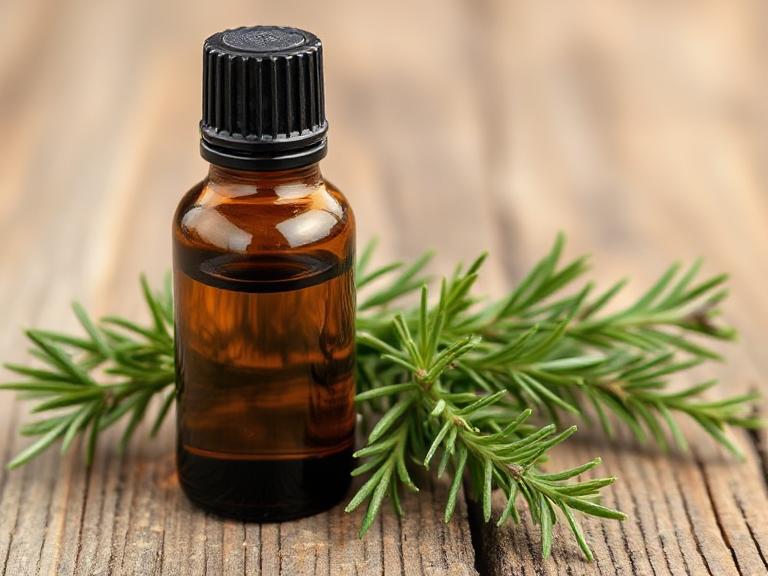Learn how to make rosemary oil for hair growth at home with this easy DIY guide. Discover benefits, usage tips, and results backed by science and TikTok trends.
Social media is filled with loads of hair care hacks, and one remedy that has taken over the beauty world is rosemary oil for hair growth. Once an esoteric secret of herbalists, this fragrant essential oil is now a beauty trend occurring around the world. Rosemary oil is all over social media, from influencers with waist-long hair to dermatologists explaining the science. Rosemary oil has surged to cult status, and you can literally make it at home in a few easy and super inexpensive steps.
We’ll examine the science behind rosemary oil, why rosemary oil is trending, and walk you through the steps to make your very own rosemary oil to achieve powerful, natural hair growth results.
What are People Obsessed with Rosemary Oil
1. It Works
There are now studies that have proven rosemary oil is an effective treatment for hair growth and hair loss, and it is as effective as minoxidil (the main active ingredient in Rogaine) without the negative side effects. One 2015 study published in SKINmed compared the effectiveness of rosemary oil and minoxidil over 6 months. The study reported that rosemary oil and minoxidil had comparable hair growth and density results!
2. Inexpensive and Natural
Unlike expensive salon treatments or serums, making at-home rosemary oil is very inexpensive. You aren’t creating any weird monkey’s paw with harsh chemicals and fillers — just pure plants.
3. The Power of Multitasking
Rosemary oil isn’t just for hair growth. It can also:
Soothe an itchy scalp
Reduce dandruff
Increase shine and softness
Boost circulation
Smell beautiful and invigorating
How Rosemary Oil Works for Hair Growth

Rosemary oil stimulates & promotes blood circulation in the scalp, which:
Encourages the stimulation of the follicles
Aids in preventing thinning and falling hair
Strengthens the roots for thicker hair
Brings oxygen and nutrients directly to the hair follicles
In addition, rosemary is known to inhibit DHT (dihydrotestosterone), which is the hormone responsible for hair loss.
How To Make Rosemary Oil at Home for Hair Growth

Making rosemary oil at home doesn’t require an herbalist or chemist’s skills. It requires 2 ingredients and a little patience.
Ingredients:
Fresh rosemary sprigs (3-5 large sprigs) OR dried rosemary (2 Tbsp)
A carrier oil. Choose one: coconut oil, olive oil, jojoba oil, or almond oil – about 1 cup.
Tools:
Clean a glass container with a lid.
Saucepan or slow cooker (this is optional)
Strainer or cheesecloth
Dark glass dropper bottle for storage.
Method 1: The Slow Infusion Method (Great for Potency)
Steps in Order:
Cleaning: Rinse the fresh rosemary to remove the dirt (and dust) and dry thoroughly.
Bruising: You will want to bruise the leaves by crushing with your hands or a spoon to release the oils.
Mixing: Add the rosemary to a clean jar, then cover completely with the oil of your choice.
Method 2: The Quick Heat Method (Done in 30 minutes)
If you are in a hurry, this method is for you.
Quick Steps:
Combine rosemary and oil in a small saucepan.
Heat over low for 30–45 minutes (do not boil).
After it cools, strain the oil and put it into your storage bottle.
How to Use Rosemary Oil for Hair Growth
1. Scalp Massage (2–3 times a week)
Put 3–5 drops on your scalp directly.
Massage (then slowly) for 5–10 minutes.
Keep the oil on (at least for 30 minutes, overnight is best).
Shampoo as normal.
2. Pre-Shampoo Treatment
Start by applying oil onto your hair from roots to ends.
Leave on for 1 hour or overnight.
Wash out thoroughly with shampoo.
3. Mix with Shampoo or Conditioner
You can add a few drops into your shampoo or conditioner for a constant source of rosemary benefits.
4. Daily Leave-In Tonic
Mix rosemary oil and water in a spray bottle.
What Results to Expect & When
Week 1–2: The Scalp feels refreshed and less itchy
Week 3–4: Reduced hair fall, enhanced shine
Months 2–3: Observing noticeably thicker baby hairs/alopecia filled in around the hairline
After 6 months, For Many Users, increased density and length.
Expert Opinions: Is Rosemary Oil Safe?
Most dermatologists feel that rosemary oil is safe to use when done in the right way; however, consider:
Avoid if:
You have a known allergy to rosemary or other essential oils.
You have sensitive skin or scalp (do a patch test first).
You are pregnant (check with your physician before topical use).
Tips: Do it right, get maximum results
See if warm prior to putting it on; I find warm oil is absorbed much better than cold.
Do one session of scalp derma rolling each week, and it will significantly increase results.
Utilize a silk pillowcase to help reduce hair breakage.
Document your hair journey with photographs each month.
Should You Try It?
DIY rosemary oil is probably the best, cost-effective, and rewarding beauty ritual. It is:
Easy
Natural
TikTok-approved
Backed.
Whether you’re dealing with hair thinning, postpartum hair loss, or just want thicker, healthier hair, this DIY rosemary oil treatment is a new staple to add to your 2025 beauty routine.
FAQs
1: Can I leave rosemary oil on overnight?
Sure! Actually, sleeping with it on can help with absorption. Just use a towel for your pillow case!
2: How long does homemade rosemary oil last?
If stored properly in a cool and dark place, it lasts approximately 3-6 months. Always just smell for rancid
3: Will rosemary oil regrow hair on bald spots?
It can get dormant follicles stimulated again, but results can vary! It works better for thinning hair or slow-growing hair rather than for totally bald!
4: Should I use fresh or dried rosemary?
Both are good! Fresh herbs smell a lot and have natural oils, but dried rosemary has a longer shelf life and is easier to store!












